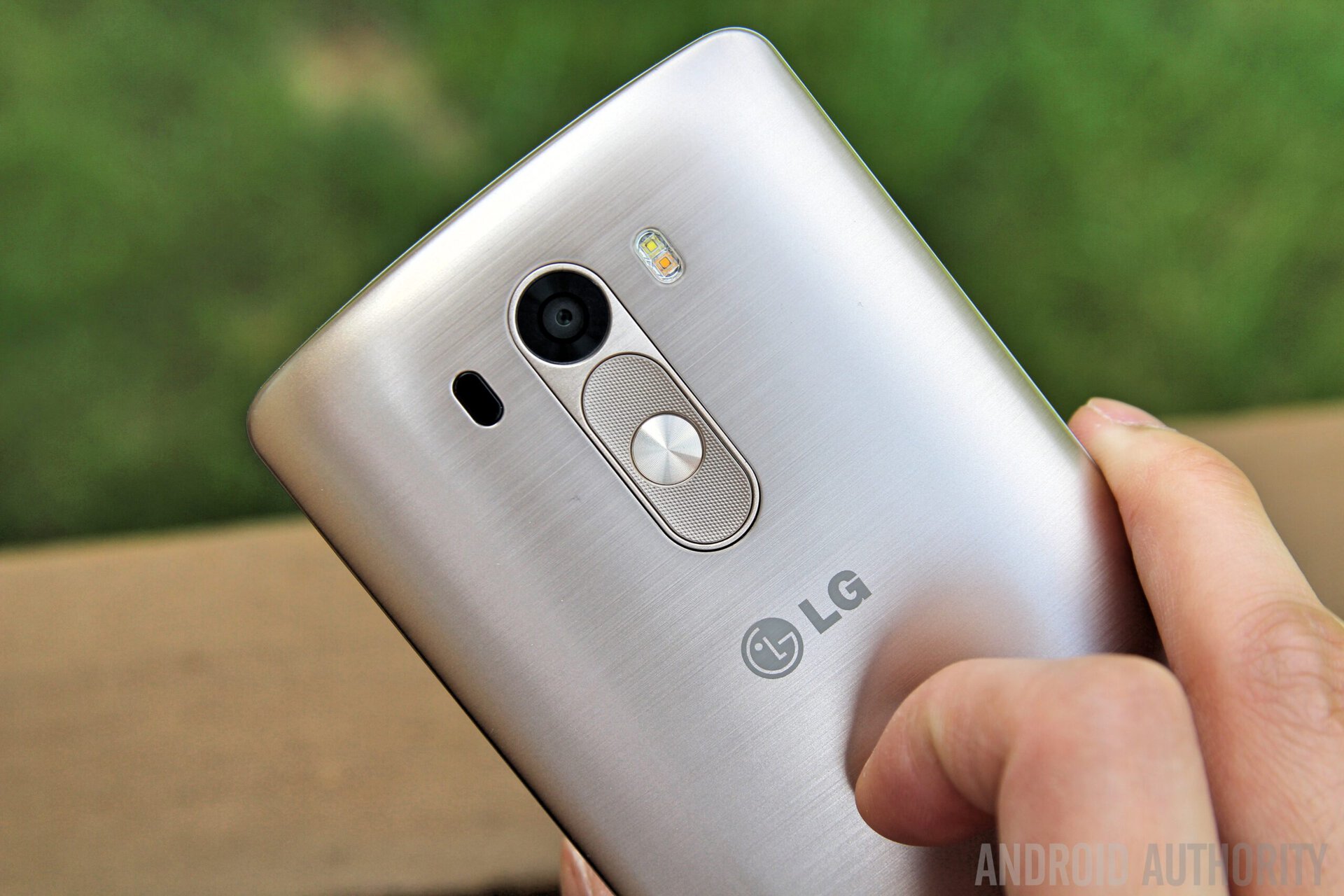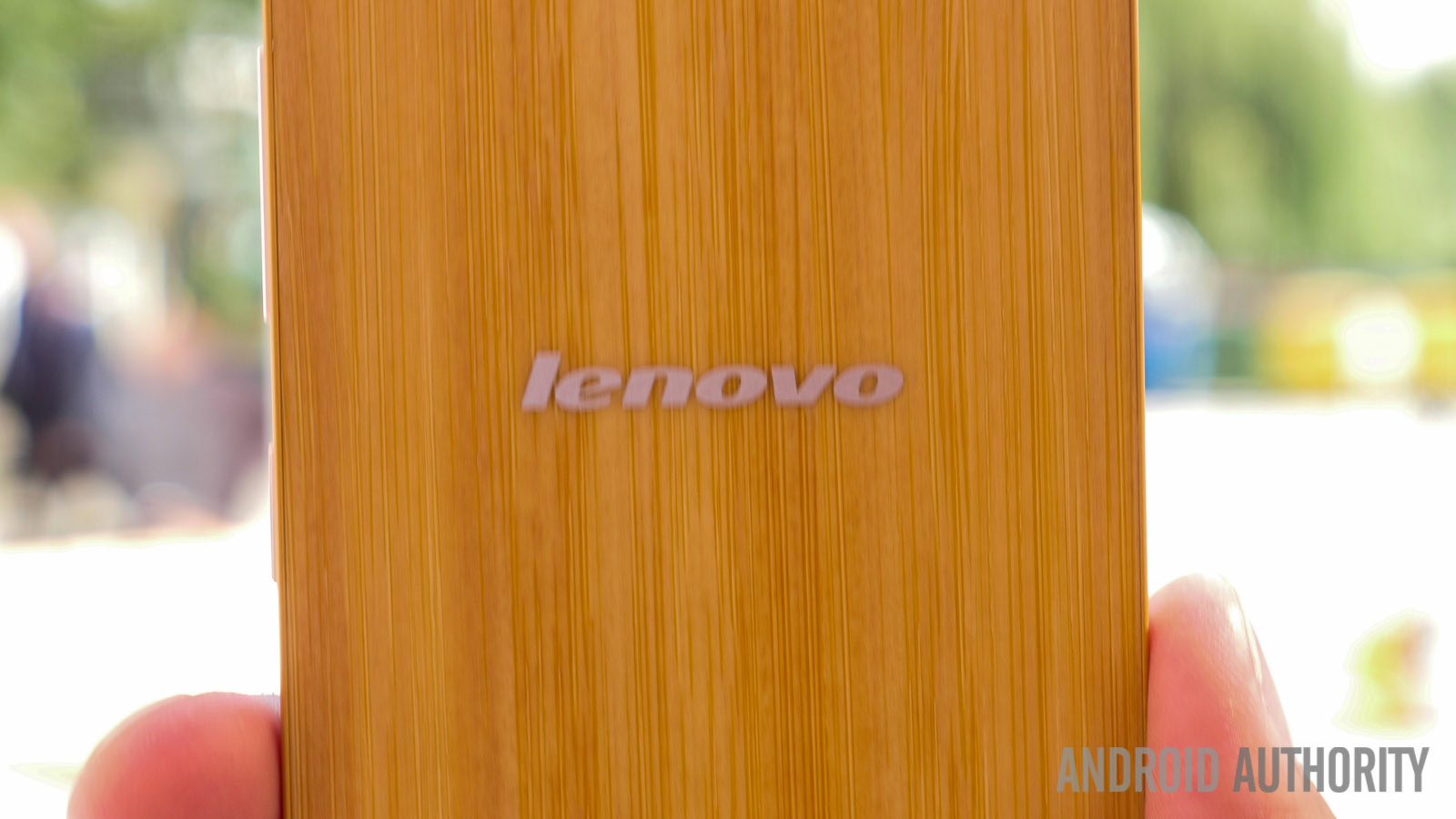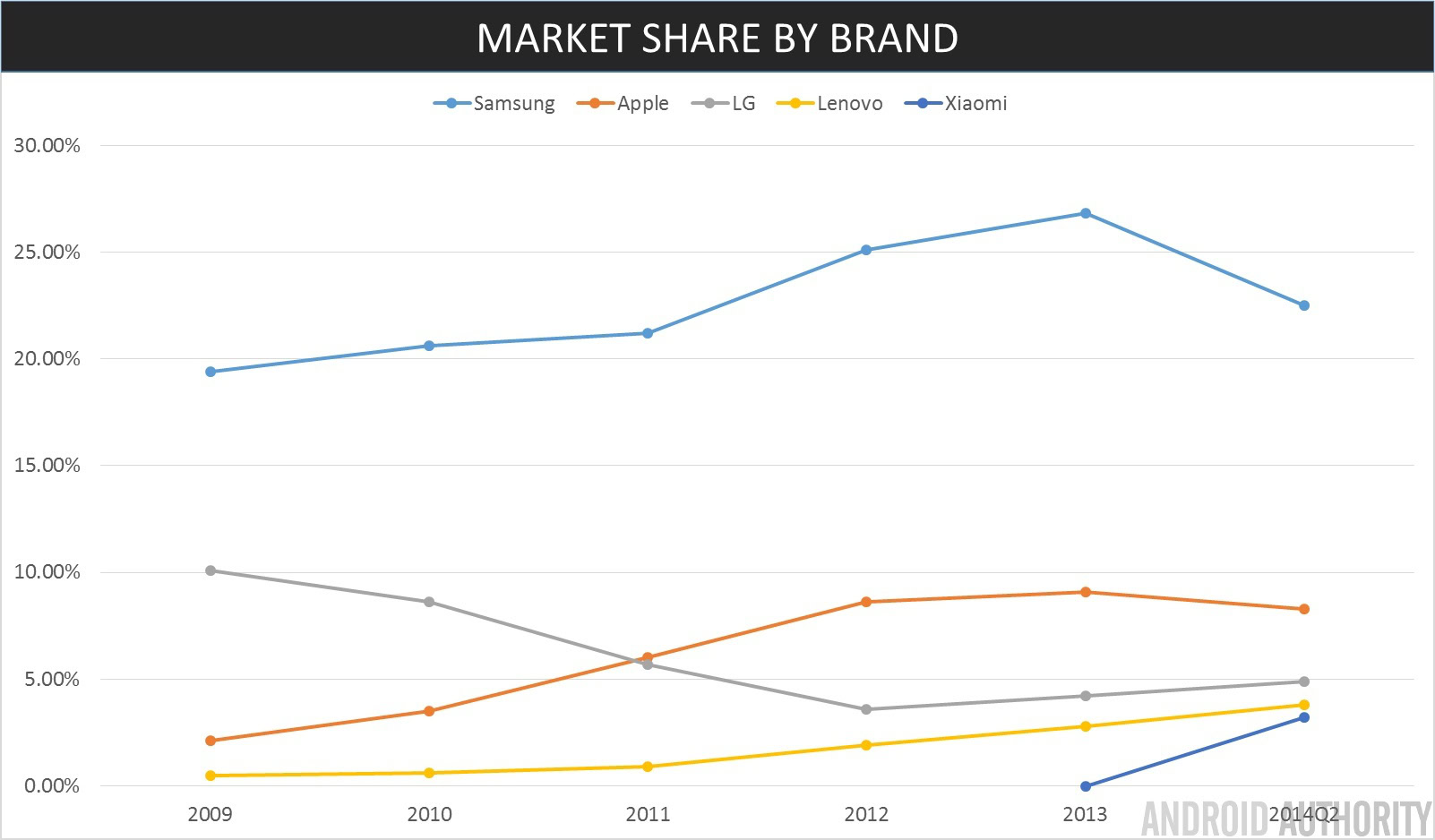Affiliate links on Android Authority may earn us a commission. Learn more.
Samsung is falling, but who is rising?

The news that Samsung’s profits are in decline as mobile sales slump has caused a bit of a stir. Samsung is still the world’s biggest smartphone manufacturer. When you hear that the last quarterly profit was $4 billion you’d be forgiven for wondering how big the problem is, but that represents a 49% drop on the same quarter last year.
We’ve already discussed what’s happening to Samsung, and looked at where Samsung might be going wrong, but what are other OEMs doing right? Samsung was the only top five handset manufacturer to experience a decline in sales. How are the other four outperforming it, and can Samsung reverse the trend? Let’s take a look at the rising stars.
Life’s good at LG

While Samsung recorded its worst quarter for mobile in years, LG reported record sales. A very respectable 16.8 million Android phones helped generate a $450 million profit. In 2011 the LG chairman shook things up and pulled divisions together to focus on the smartphone market. LG has been on the rise since then, producing the Nexus 4 and 5 for Google, and launching the extremely successful G series.
Why is LG doing so well? It seems to be innovating and pushing advances like the quad HD display in the LG G3, but without letting prices get out of control. If you look at the flagship line-ups LG is significantly undercutting Samsung and closing the quality gap. It’s a dangerous combo for the market leader and LG is competing in all the same markets as Samsung, so it cannot be ignored.
Continued investment in research and development ensures that LG will be a real threat for years to come and it could beat Samsung to the punch on the next big thing.
Xiaomi squeezes margins

The race to the bottom as average selling prices for smartphones fall is an undeniable trend and Xiaomi has a low-cost hardware business model that is delivering great success. By outselling competitors in China and other fast-growing markets Xiaomi has claimed third spot in the smartphone vendor league for the third quarter.
Xiaomi has successfully managed a trick that Samsung has failed to pull off – it has a profitable app store of its own. Hugo Barra recently talked about Xiaomi’s business model and highlighted the importance of a simplified product line-up, a dedicated e-commerce platform, and a fast and responsive attitude to loyal customers. Other profit sources can be used to subsidize handset sales and that’s going to be very tough to compete with.
How much further Xiaomi can go is hard to say, but the ambition is clearly huge. The company is about to spend $1 billion on online video content to boost its smart TV ecosystem and get a slice of China’s TV pie. Clearly Xiaomi would have a lot of work on its hands to replicate its Chinese success in the west, not least because it will run into patent challenges, and that’s good news for Samsung, but losing ground to Xiaomi in the biggest market in the world doesn’t bode well for the future.
Lenovo keeps growing

IDC has Lenovo slightly ahead, but essentially tied for fourth place with LG in the third quarter smartphone market. That’s based on strong sales in China and in multiple markets throughout Asia, the Middle East, and Africa. If that wasn’t reason enough to worry consider that Lenovo just completed the purchase of Motorola from Google. If you factor in those sales Lenovo jumps into third place behind Apple and Samsung.
Motorola has been killing it at the budget end of the market and the world’s best selling PC maker is no stranger to reasonably priced hardware. Now that it has the Motorola brand, newly revived by Google, it has also inherited carrier relations in the west that the other Chinese OEMs can only dream about. Lenovo can also take the Motorola brand back to the fastest-growing markets. It can essentially pick the strongest brand in each market and run with it.
Now it can compete with Samsung everywhere and it will. Lenovo could emerge as a real global threat to Samsung’s dominance.
The elephant in the room is Apple
The idea that falling prices are behind Samsung’s declining profits seems to be supported by losses for other OEMs at the premium end of the market, like Sony, but that doesn’t explain how Apple is continuing to enjoy comparatively huge margins.
We could point to the same differences that seem to be helping Xiaomi rise. Apple has a real ecosystem around its hardware that boosts profits and it has a relatively limited product line-up.
Apple also enjoys unparalleled brand loyalty. Samsung has built a really strong brand with the Galaxy line and it definitely has a vociferous and dedicated fan base, but it doesn’t seem to be preventing a drop in sales where the market is saturated. It seems easier for disgruntled Samsung fans to jump ship to another Android OEM than it is for Apple fans to switch to Android.

Look at global smartphone market share from 2009 through to today. It’s interesting to note that Apple has the steadiest performance, but it has never been massively dominant. Even with a fall in market share the fact that the overall market has grown has enabled Apple’s profits to continue to soar. It seems to have an iron lock on a decent chunk of the premium end of the market.
Is a new star inevitable?
Samsung’s rise has been amazing, but it’s not easy to maintain such a large share, in fact no one has done it before. Can it turn this trend around? Perhaps Samsung will find a level, like Apple, that it can maintain, or perhaps it will go the same way RIM and Nokia did. Will Lenovo take up the mantle? Can LG grow that big? Is it possible for Xiaomi to go global? Who is going to dominate the smartphone market next?